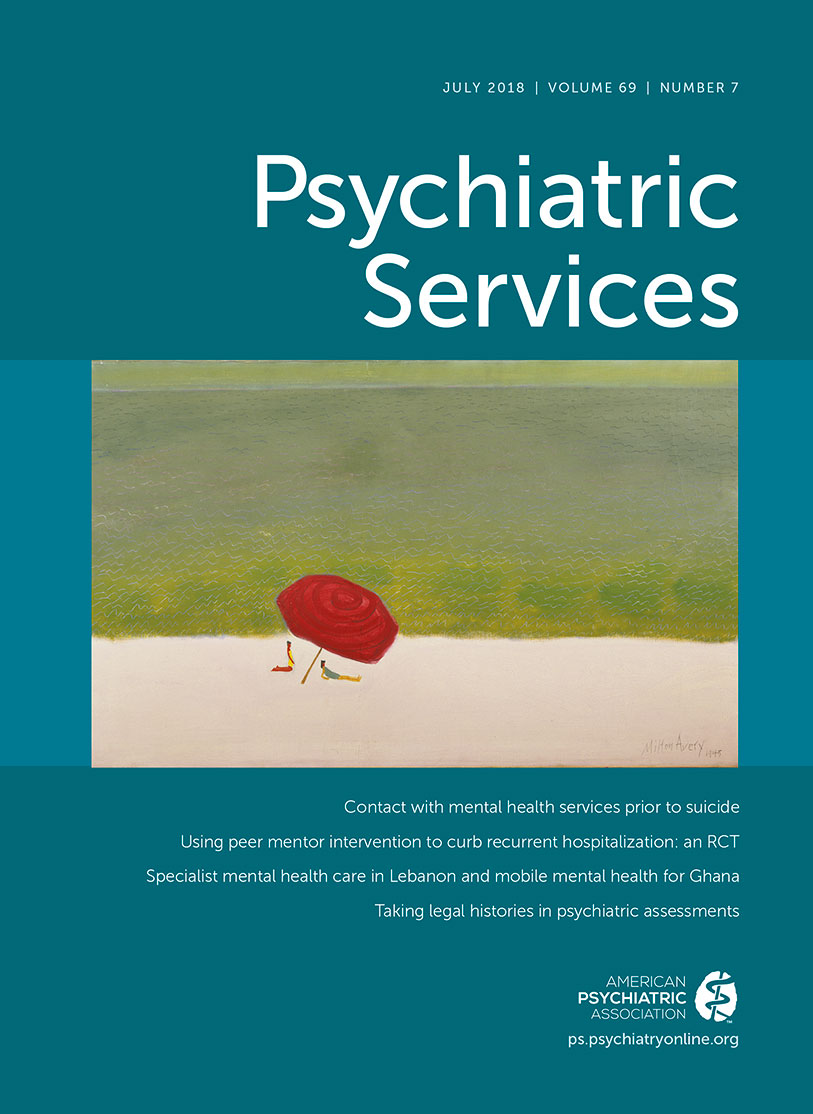To Prevent Suicide, Address It Directly
In this issue, Dr. Walby and colleagues present a meta-analysis of suicide rates among patients receiving mental health services, confirming that only about a quarter of suicide decedents had received mental health care just prior to death. Commenting on service and policy implications, the authors note that expanding access to mental health care should be a priority, because most individuals who died by suicide were not receiving such care. They also discuss the need to improve detection of suicide risk among patients receiving primary care and note that improvements in mental health care quality might help reduce suicide deaths.
Improving access to mental health care can reduce morbidity and improve health of those who receive such care. However, improving access is a challenging and complex goal; obstacles include stigma, the supply of professionals (especially psychiatrists), and coverage and utilization barriers in health insurance programs. Emerging evidence also suggests that access to routine mental health care may insufficiently protect patients from the risks of suicide. Analyses of suicide patterns found that suicide rates among those who received care are much higher than rates for the general population as well as rates for veterans and other groups often considered high risk. Usual care may not be sufficiently protective. What actions could feasibly be implemented to reduce suicide among people receiving health care?
The National Action Alliance on Suicide Prevention (NAASP) recently released a report from its Transforming Health Systems Initiative Work Group (of which I was a member) to address this problem. Recommended Standard Care for People With Suicide Risk: Making Health Care Suicide Safe considers the evidence on feasibility and effectiveness of measures that should be standard in modal care settings (primary care, emergency departments [EDs], and outpatient and inpatient mental health and addiction treatment). The report acknowledges that excellent suicide care, such as full implementation of the Zero Suicide care model or replication of the Henry Ford Health System’s Perfect Depression Care program, which reduced suicide over 75% in that system’s mental health programs, may not be feasible in all organizations. However, the report discusses evidence about the effectiveness of brief interventions that can be implemented in any health care organization to prevent suicide and recommends that these effective, brief interventions be used much more broadly in ordinary settings. A review of these interventions will orient readers to the emerging potential of suicide prevention activities in ordinary health care settings.
The accuracy of screening to identify individuals needing support for suicide risk compares favorably with screening to identify other health conditions, such as elevated cholesterol or blood pressure, as risk factors for cardiovascular disease. Simon and colleagues reviewed suicide deaths in a population of over 80,000 individuals who had completed the widely used nine-item Patient Health Questionnaire. Over 60% of the individuals who died by suicide over the period that followed had elevated responses on item 9, which asks about suicidal thoughts. The Action Alliance Group recommends suicide screening in primary care and EDs of all individuals who have behavioral health diagnoses or are receiving behavioral health treatments and additionally screening within EDs the patients who have self-harmed. A possible barrier to broader suicide screening is the belief that complex, highly expert care is required for patients at risk of suicide. Countering this perception is the reality that several brief interventions have been shown to reduce suicide risk.
For example, the Safety Planning Intervention developed in 2009 by Stanley and Brown is a brief (30- to 40-minute) intervention that aims to give patients tools to manage suicidal thoughts and feelings. In a recent large trial in the Veterans Health Administration, safety planning coupled with follow-up calls reduced suicidal behaviors and increased participation in treatment. A critical part of the intervention is identifying and collaboratively reducing access to potential means of self-harm. Safety planning can be conducted by mental health or health care professionals who have received brief training.
Another brief intervention with demonstrated effectiveness in reducing suicide attempts and deaths is brief supportive interactions (sometimes referred to as “brief nondemand caring contacts”). Effectiveness has been demonstrated for letters, phone calls, and other means of contact, including text messages, postcards, and visits. Caring contacts appear to be especially useful when patients are vulnerable and in transition (e.g., after inpatient discharge, ED visit, or missed appointment). The practice is very similar to next-day follow-up calls after ambulatory surgery.
The NAASP report suggests that suicide screening coupled with brief interventions should be standard in health care settings. To reduce suicide, we should endorse and implement actions directly targeted at this goal.




